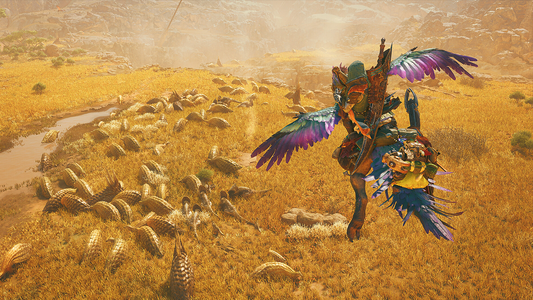This is a modified version of a post that first appeared on Meeple Like Us.
You can read more of my writing over at the Meeple Like Us blog, or the Textual Intercourse blog over at Epitaph Online. You can some information about my research interests over at my personal homepage.
---
Anyone who has been involved in education for any length of time probably knows of Bloom’s Taxonomy, even if they’re not familiar with its origin or history. As a way of systemising learning it has burrowed its way into the root and trunk of educational systems around the world. Despite the lack of any real rigour in its development it has come to dominate discussion about pedagogical structuring. Even if the idea has become a little unfashionable, the impact it has still means it can’t be ignored. Many fight against it, few are victorious. The learning outcomes of modules and courses around the world draw from this semi-mystical set of verbs much in the manner of religious observance. It is important to say that words that are appropriate to the level of mystical enlightenment sought. At the lowest levels of what’s sometimes called the cognitive domain, we look for people do be able to ‘select’ or ‘identify’ things. At the highest levels we would expect people to ‘judge’, ‘critique’ or ‘evaluate’. In the middle are things like ‘apply’ and ‘compare’. It’s largely nonsense and full of inconsistencies. To express that viewpoint though is to strike at one of the holy pillars of pedagogic theory and you need to prepare yourself for the reverberations.

By K. Aainsqatsi – Own work, CC BY-SA 3.0, https://commons.wikimedia.org/w/index.php?curid=4000460
If it’s a nonsense system though, why is it so pervasive?
Well, that’s easy – because it’s helpful. There’s a common saying in science – all models are wrong but some models are useful. Bloom’s taxonomy is exactly that – a wrong system that manages to offer some degree of illumination as to the way educators can think about the skills they are attempting to impart to their students. It’s not accurate. It’s not particularly well supported by evidentiary literature. However, it gives us a frame upon which we can hang the learning outcomes of educational units by expressing the rough goals we are hoping to accomplish. It’s easier to ‘define’ than it is to ‘analyze’ and easier to ‘analyze’ than it is to ‘judge’. That is, except for all those times when that isn’t true. Bloom’s taxonomy gives us a starting point, and from there it’s fudging all the way down.
For all its flaws I also think this is a useful lens for contextualising some of the posts I’ve published topic of board game media. Previous editorials there include the myth of the objective review; a wish for a kind of New Board Game Journalism; and a buttload of stuff about ethics.. It’s in that capacity that I want to discuss it today – as a way of talking about what reviews are, what they can be, and why I think we do the hobby an injustice by focusing too much on description as opposed to critique.
Bloom’s taxonomy is sometimes referenced as a hierarchy, with successively higher levels of ‘thinking skills’ being better or more complicated than the ones below. It’s more accurate, if such a thing can even be said of Bloom’s model, to think of it as a ladder. Each level is necessary to reach the levels above – no level is inherently more important than others, and all levels will come into play at some point in the act of critical thinking, opinion forming, and expression. In order to produce a meaningful hypothesis, one must first move through the earlier levels of the model to have something about which one can hypothesize.

In any inherently academic exercise then, every level of this taxonomy will likely be employed. Consider a review. We might define by explaining how particular mechanisms of a game work. We might paraphrasecertain sections of a rule-book to illuminate those definitions. We will likely organize or generalize based on the structure of the work we’re doing. We’ll almost certainly categorize and compare as soon as we talk about how a game fits into the wider ecosystem of the landscape, and so on.
What’s important for the act of reviewing though is the proportion of the activity that is to be found in each of the different levels, and what each level imparts upon the spirit of the review. It’s here I think we find the key divergence between what I think is needed and what’s actually done in a lot of cases. I think for a lot of board game reviews too much time is spent down in the lower levels of the model and comparatively little is spent on the more challenging and interesting parts. As always, I preface this with the acknowledgement that the reviewer landscape is pretty much the one people want, as evidenced by their money and eyeballs. This is only a contemplation on what I personally think makes for a good review. It’s not necessarily where the audience is to be found. Take this all with a pinch of salt.
There is no part of this model that is ‘better’ than any other, because better doesn’t make sense in the context of building understanding. The foundational elements are just as important as the critical elements. However, you can think of each level you ascend through Bloom’s taxonomy as representing a kind of ‘order of magnitude’ improvement in the quality of insight. The farther you climb here, the more genuinely personal and reflective a piece of critical work will be. It’s an act of refinement.

Down at the bottom (knowledge) we have the stuff that doesn’t really give anyone a chance to do much except shuffle words around. Lists of components. Definitions of terms. Recognition of gameplay elements. Identification of genres or mechanisms. Insofar as anything can be objective about a review, you’re going to find it in this layer because it’s primarily where you find the uncontroversial and factual. For example:
Villainous (2018) is a hand management game of variable player powers. It comes with six abstract but distinct tokens that represents some of Disney’s colourful villains. Each villain comes with a unique decks of thirty cards, and these represent the powers, resources and opportunities they have available to compete their unique strategic goal. To accompany these beautiful components we also get various tokens, reference cards, and a number of villain guides that aid players in learning the game’s systems.
Note here that lower levels of knowledge don’t imply juvenile expression. That paragraph above is about as pompous as anything I’d write on a day to day basis. However, you can write this without putting anything of yourself in the review. In fact, I’ve never played Villainous. It arrived today, so it was just the game that was closest to hand. There’s nothing at all of me in this paragraph except for word choice. I have given you nothing that the manual couldn’t. I don’t even know if any of that is right, because I haven’t actually read the manual. I merely skimmed it.
Next we move into the layer known as comprehension, and we get activities such as restatement, rewriting, examples and paraphrasing.
The game is played over a number of turns. Each villain has their own unique goal they’re trying to achieve which they do by moving around the location board and performing the actions associated with the location selected. These actions include growing more powerful, drawing cards, activating allies, and seeding disorder into an opponent’s life by drawing from their bespoke ‘fate’ deck. In that you’ll find all the complications that will mess up their day – you might throw Robin Hood at Prince John, or the Little Mermaid at Ursula. Your job here is to manage your allies, your items, and the bothersome heroes that will be constantly trying to undermine you as you work towards your win condition.
I still haven’t played Villainous. Here I’m just paraphrasing the manual. I might expand this by throwing in some examples of cards, interpretation of rules, and perhaps even a summary of how a turn might work. There’s still nothing of me in here. I’m restating the manual.
Into the next layer (application) we start to see some higher level organisation emerge as we relate elements of the game to the components, and components to the rules, and rules to the mechanisms. We might condense the text through generalisation or editorialise by choosing which elements are most important to our discussion.
It’s in the contention between our hero and allies that we find the game – this creates a thematic link between the characters of Villainous and the wider Disney canon. This is going to make the game a joy to play for anyone, much like myself, who has a deep emotional connection to the golden age of Disney animated movies. Your choice of character as a result is perhaps going to reflect your own affections rather than any deeply strategic consideration. However, this is a game with asymmetrical incentives. You need be aware of how the decks in which you are least interested work, because that’s going to have an impact on the way you employ your own.
I wouldn’t put this exemplar review anywhere on anyone’s list of ‘great reviews of Villainous’ but I’m hopefully illustrating something more important here – that you can write a very functional review without ever requiring anything as complex as analysis. All of this text is extrapolated form the manual, from the rules, and from how I know games like this to work in general. I could pad this out to 2000 words and call it a day and I suspect it wouldn’t even raise an eyebrow. Would people even know I hadn’t played the game, much less hadn’t come up with an opinion?
Hopefully as a reader of this blog you’ve already picked up on the key problem with this proto-review – it’s not remotely evaluative. It says nothing about whether Villainous is good, or whether it works to accomplish its goals. It doesn’t say if it’s fun, and it doesn’t give you any sense of what it actually means to play a game session. It looks like a review, but it misses out on the key elements needed – it has nothing of my opinion in there. There’s subjective stuff, sure – but none of it that came from my informed perspective of how Villainous plays. As I said, this is the example game I’m using purely because it was the one closest to hand.

There are lots of great reviewers out there, and lots of reviewers that I don’t necessarily rate but still put together very well structured and evaluative work. However, there are also an awful lot that I don’t think ever escape from the application layer of Bloom’s taxonomy. You can write something that looks a lot like a review and never need to move from that rung. When more evaluative content comes in, it’s often as a final summative paragraph or ‘last thoughts’ conclusion. It’s rarely embedded into the structure of the work itself. I think that’s a massive shame – not because it’s a bad review, but because it’s a review that stifles the author’s own creativity. If a review spends too much time in the levels of the taxonomy that we’ve just discussed, it’ll never draw my interest because it never says anything that makes me stop and consider.
I think this is what what people mean when they talk about reviews as being ‘90% rules explanation’ and then a ‘it was good, bye’ sign-off. It’s not that people aren’t moving beyond the application level of the framework so much as they aren’t balancing the prominence they give to the various different levels. You end up with something slanted too much towards the perfunctory and that’s not appropriate for producing genuinely meaningful works of review and criticism.
Let’s see what happens when we climb a l’il bit higher.
The next level is analysis and here we find inferences, comparisons, categorizations and differentiations. Think of Bloom’s rose, as shown at the top of this post, as two semi-circles. The first half is information you draw from elsewhere. The second half is insight that draws from you. Here’s where we start to enter the most personal and, to my mind, most effective parts of a review.
Do you know how I know these bits are the most important? It’s because I can’t write anything of value at this level about Villainous. I have exhausted my supply of trivially extrapolated details. I don’t have the experience of the game to draw from, and thus nothing more to contribute to a discussion. It’s not that there’s nothing I can say, but there’s nothing I can say about the game. I can tap-dance around it, but you’re just going to notice that my feet never go where they should.
Here you might draw in comparisons between Villainous and… see, I don’t even know what would be a good comparison. Codenames Disney? Blood Rage? Cosmic Encounter? I could probably infer from the rules some meaningful and appropriate games with which to contrast but I could never truly perform that comparison in a meaningful way without defaulting to platitudes and generalisations. From this point on, I’m bluffing. I can say things like ‘Villainous feels like a heavier game than you’d expect from its design’ and there I’m rolling the dice that the design feels light and that it feels



































